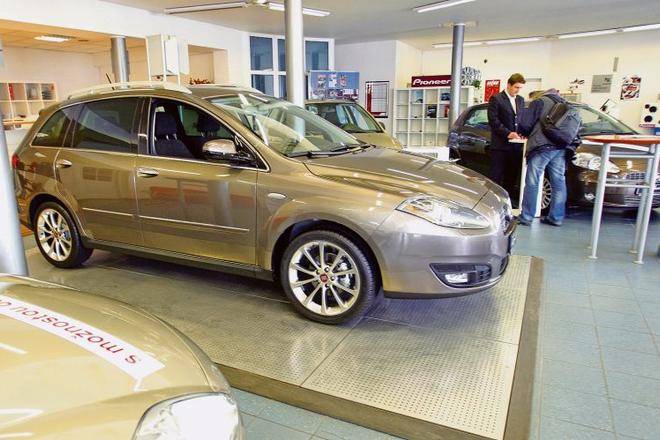IN SLOVAKIA the traditional preference to buy, as opposed to lease, cars or manufacturing equipment means that the leasing industry lacks maturity in comparison with markets in western Europe. But leasing professionals say that as a result many companies carry excess costs and staff, making their businesses less competitive on the international market.
“The clients still want to own the financed assets, and not only use them during the time they are being paid for,” Marián Horváth, chairman of the Committee for Statistics and Media of the Association of Leasing Companies of Slovakia, told The Slovak Spectator.
According to the Association of Leasing Companies of Slovakia, operational leasing’s current market share is somewhere between 10 and 15 percent. Pavol Bojanovský, member of the board of directors and executive director for corporate and centralised trade at ČSOB Leasing, confirmed for The Slovak Spectator that operational leasing in Slovakia lags behind the situation elsewhere.
Operational leasing is still quite a young and unknown product of fleet financing in Slovakia, starting some 15 years ago, while in western European countries the history goes back 50 years, Lucia Urbanová, the commercial director of Business Lease Slovakia, told The Slovak Spectator.
“At the same time we see a strong sense of ownership when it comes to housing, cars, offices and other different services,” she said.
On the Slovak market it is mostly firms owned by international parent companies that lease equipment, “as they know the advantages already”, Bojanovský said, adding that once “Slovak firms understand the advantages of operative leasing it will contribute to the popularity of this product.”
Urbanová said that in the first half of 2013, Slovak companies acquired 19,306 new company cars, with 59 percent of these by financial or operational lease.
“This is important information for leasing companies and it proves that vehicle leasing plays a significant role in society,” Urbanová told The Slovak Spectator. “By leasing cars instead of purchasing them, companies can keep scarce capital available for investments.”
Companies in Slovakia have already started with some outsourcing activities, and there is a positive attitude toward outsourcing security, cleaning or accounting services, for example.
“We think that the logical next step will be fleet outsourcing as soon as companies move to analyse this part of their internal costs,” Urbanová told The Slovak Spectator.
Who is leasing?
Operational leasing is suitable for financing autos, trucks and machines, Horváth said. Personal and commercial vehicles traditionally account for about 60 percent, trucks from 25 to 30 percent and the remaining 10-15 percent is accounted for by financing machinery.
As for the type of clients using operational leases, this form is favoured almost exclusively in the corporate sector, “mainly in case of companies running businesses in the area of services, but also industry and construction”, Horváth said.
Urbanová said operational leases “reduce the financial and operational risk to the customer with a fixed monthly payment, take assets off the balance sheet on a contractually-reduced time frame, free up cash to invest in the business; provide access to professional fleet management skills and connections to professional network dealers and services as well as consolidating cost and informational data and simplifying processes”.
Regarding the potential risks, Urbanová suggests that leasing is much more predictable than purchasing assets. When buying, cash is tied up in vehicles and equipment, the resale value at the end of life is variable and that risk is taken by the company. Furthermore, in-house resources are tied up in fleet management activities.
Focus on core business
Operational leasing is the most beneficial since companies can eliminate worries about one or more aspects of its operations, Bojanovský said, adding that the client has a fixed payment and a budget of costs for individual services.
“In event of exceeding the assumed costs, the losses are covered by the provider of the operational lease,” she stated.
In the segment of personal and commercial vehicles, this product is beneficial along with solving the financing itself because it also reduces or minimises further costs for operation of the client’s car fleet, Horváth said.
For trucks, operational leasing is being used mainly if the client has guaranteed transportation needs only for a shorter time period than in the case of classical financial leasing, he added. When it comes to financing machines, clients use operational leasing mainly if the particular technology tends to become quickly outdated, Horváth said.
As for the next development of operational leasing in Slovakia and on which factors future development will depend on, Urbanová has very positive expectations and predicts the operational leasing market will grow by 10 percent in 2014.
“Slovak companies will follow the trend of Western European countries; it is just about the time when this solution becomes more common and used here,” Urbanová said. “Operational leasing takes assets off the balance sheet and frees up cash to invest in the core business.”
Beata Balogová contributed to this story



 Most leasing in Slovakia involves automobiles and trucks. (source: SME)
Most leasing in Slovakia involves automobiles and trucks. (source: SME)